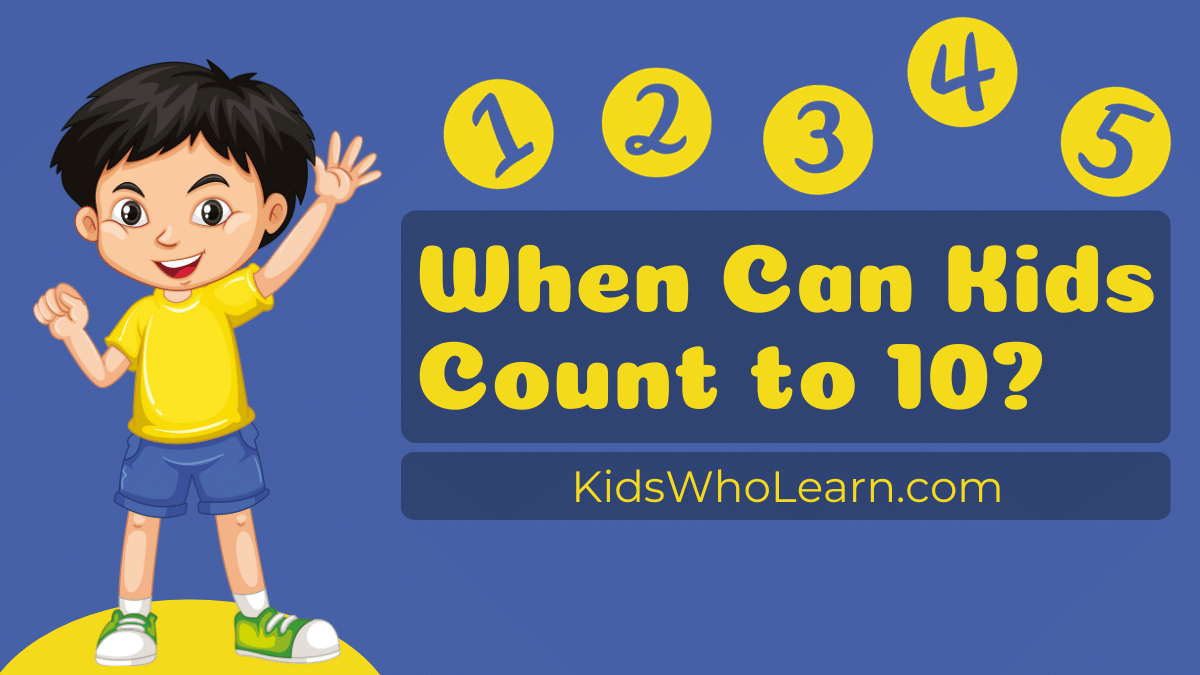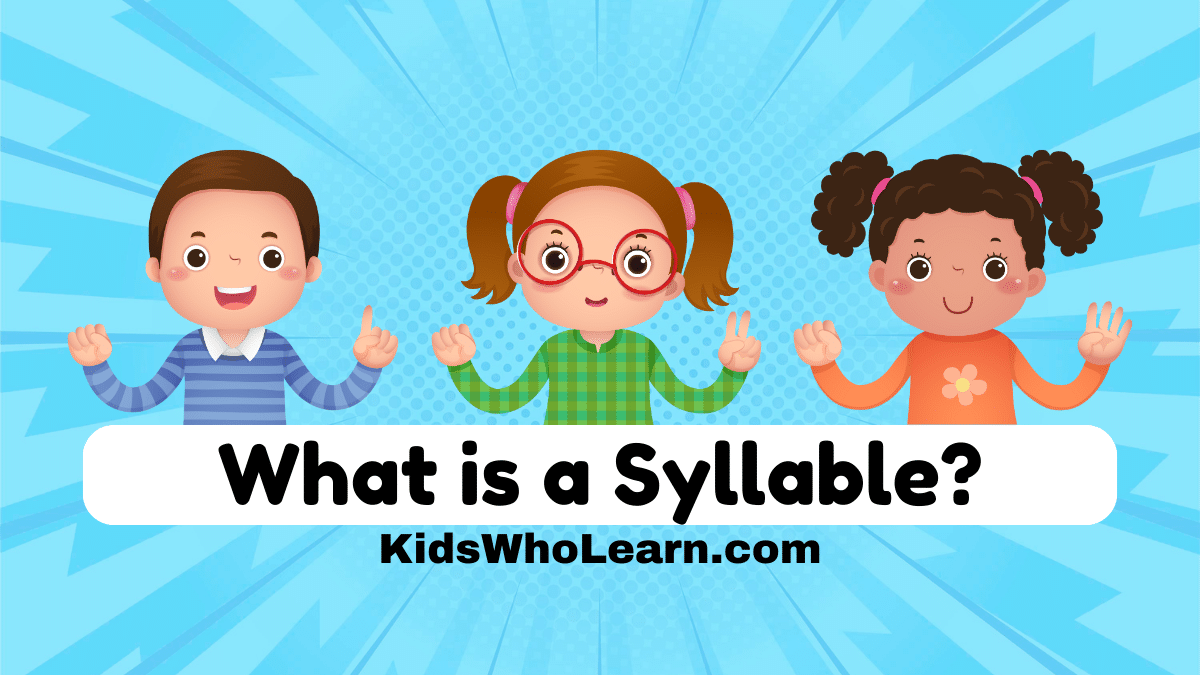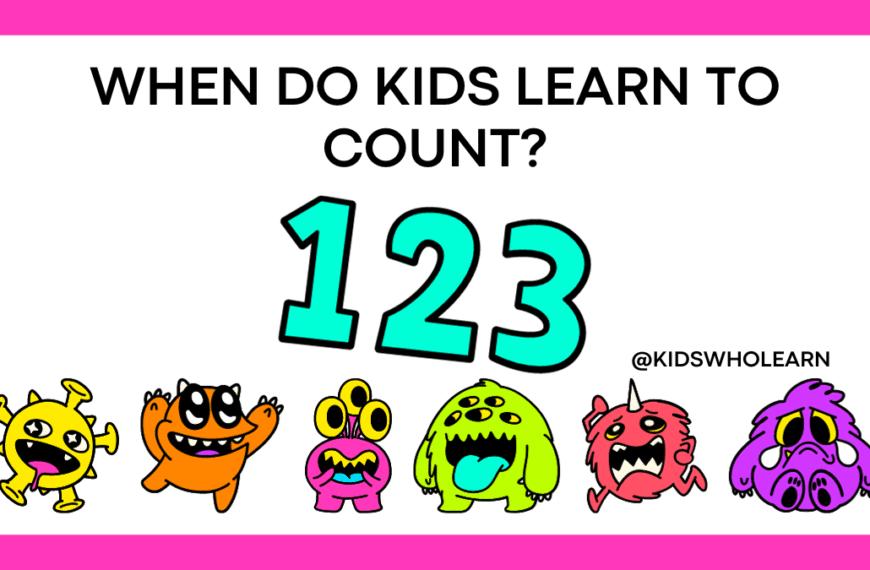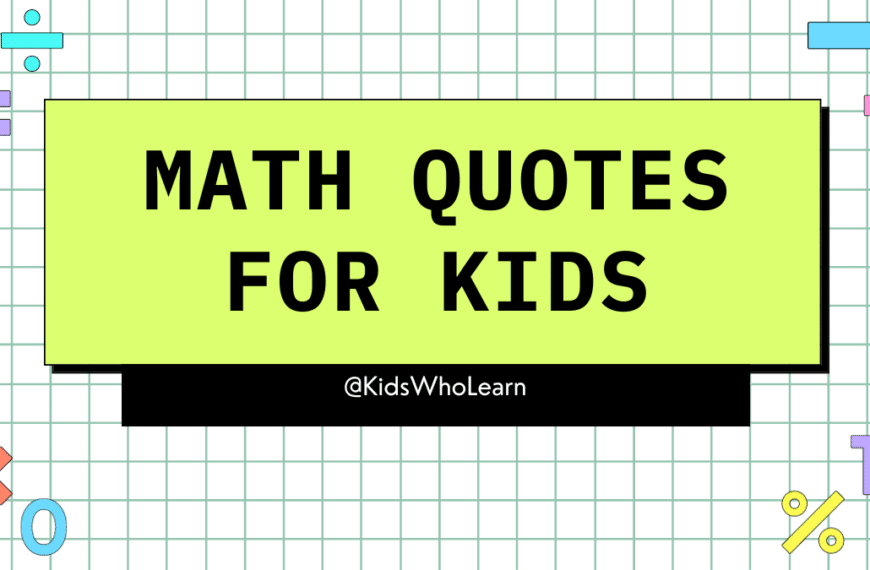Counting is a fundamental skill that children need to learn in their early years. It is one of the first steps towards developing mathematical abilities. But when can kids count to 10? The answer varies depending on several factors. In this article, we will explore the different factors that influence a child’s ability to count and provide tips on how to encourage counting skills.
Understanding Child Development is crucial in determining when kids can count to 10. Children develop at different rates, and their ability to count is no exception. Some kids may count to 10 at the age of three, while others may not master this skill until they are four or five years old. It is important to remember that every child is unique and will reach milestones at their own pace.
When Can Most Kids Start Counting? Most children can start counting to 10 between the ages of two and four. However, some may start earlier or later than this. It is essential to provide a supportive environment that encourages children to practice counting. By doing so, you can help them develop their mathematical abilities and set them up for success in the future.
Key Takeaways
- Children develop at different rates, and their ability to count is no exception.
- Most children can start counting to 10 between the ages of two and four.
- Providing a supportive environment that encourages children to practice counting is essential.
Understanding Child Development
The Role of Age
As children grow and develop, they reach certain milestones at different ages. One of these milestones is the ability to count to 10. While some children may be able to count to 10 at a very young age, others may not develop this skill until later on.
Typically, children are able to count to 10 between the ages of 2 and 4. However, it is important to remember that each child develops at their own pace, and some may take longer to reach this milestone.
Cognitive Development Stages
The ability to count to 10 is a cognitive skill that develops as children progress through different stages of cognitive development. These stages include:
-
Sensorimotor Stage (0-2 years): During this stage, children learn through their senses and physical interactions with the world around them. They begin to develop an understanding of cause and effect, and may start to recognize numbers and counting.
-
Preoperational Stage (2-7 years): This stage is characterized by the development of symbolic thought and language. Children begin to use words and symbols to represent objects and concepts, and may start to count and recognize numbers more consistently.
-
Concrete Operational Stage (7-12 years): During this stage, children begin to think logically and understand concepts such as conservation and reversibility. They are able to count and perform basic mathematical operations with greater accuracy and understanding.
-
Formal Operational Stage (12+ years): This stage is marked by the development of abstract thinking and reasoning. Children are able to think critically and solve complex problems, including more advanced mathematical concepts.
Overall, the ability to count to 10 is an important milestone in a child’s cognitive development. While each child develops at their own pace, understanding the typical age range for this skill can help parents and caregivers support their child’s learning and development.
When Can Most Kids Start Counting?
Counting is an essential skill that kids will use throughout their lives. It’s a fundamental part of math and helps with basic problem-solving. But when can most kids start counting?
Most children can start counting between the ages of 2 and 4 years old. At this age, they can count to 10 or higher, but they may not always understand what the numbers mean. They may just recite the numbers in order without understanding their value.
Around the age of 4, children start to understand the concept of counting. They can count objects and understand that each number represents a quantity. They can also count backward from 10 and understand the concept of subtraction.
It’s important to note that every child develops at their own pace. Some children may start counting earlier, while others may take longer. It’s essential to encourage your child to practice counting and provide them with opportunities to count objects in their environment.
In conclusion, most children can start counting between the ages of 2 and 4, but every child develops at their own pace. Encourage your child to practice counting and provide them with opportunities to count objects in their environment to help them develop this essential skill.
Factors Influencing the Ability to Count
When it comes to counting, children develop at different rates. Some may begin to count to 10 before the age of 2, while others may not be able to do so until they are 4 or 5 years old. There are several factors that can influence a child’s ability to count, including environmental and genetic factors.
Environmental Factors
Environmental factors refer to the experiences and opportunities that a child has to learn and practice counting. Some of the environmental factors that can influence a child’s ability to count include:
- Exposure to numbers: Children who are exposed to numbers early on, such as through books, toys, and games, are more likely to develop counting skills.
- Language development: Children who have a strong foundation in language skills, such as vocabulary and grammar, may have an easier time understanding and using numbers.
- Parental involvement: Parents who actively engage in counting activities with their children, such as counting objects or singing counting songs, can help promote counting skills.
- Educational opportunities: Children who attend preschool or other early childhood education programs may have more opportunities to develop counting skills through structured learning activities.
Genetic Factors
Genetic factors can also play a role in a child’s ability to count. While there is no single “counting gene,” research suggests that certain genes may be associated with mathematical ability. Additionally, studies have shown that children with a family history of math-related learning disabilities may be more likely to struggle with counting.
Overall, it is important to remember that every child develops at their own pace and that there is a wide range of “normal” when it comes to counting skills. By providing children with opportunities to learn and practice counting, parents and caregivers can help support their development in this area.
How to Encourage Counting Skills
Interactive Learning
To encourage counting skills in children, interactive learning is an effective method. You can use toys, blocks, or other objects to count with your child. Start with small numbers and gradually increase the count. Encourage your child to count along with you, and praise them for their efforts. You can also play counting games with your child, such as “I Spy” or “Counting Cars.”
Using Visual Aids
Visual aids can be helpful in teaching counting skills to children. You can use number flashcards or charts to help your child learn to recognize and count numbers. You can also use counting books with colorful pictures to make counting more fun and engaging. Additionally, you can use videos or educational apps to teach counting skills to your child.
Incorporating Counting in Daily Activities
Incorporating counting into daily activities is an effective way to help your child develop counting skills. For example, you can count the number of steps you take while walking up the stairs or the number of apples in the grocery store. You can also count the number of plates on the table during mealtime. This will help your child understand that counting is a part of everyday life.
By using these methods, you can encourage your child to develop their counting skills in a fun and engaging way. Remember to be patient and praise your child for their efforts. With time and practice, your child will be able to count to 10 and beyond.
Potential Challenges and Solutions
As with any developmental milestone, there may be challenges that arise when it comes to teaching your child to count to ten. Here are some potential challenges you may face and some solutions to help you overcome them:
Challenge: Lack of Interest
Your child may not be interested in counting or may find it boring. This can make it difficult to engage them in the learning process.
Solution: Make it Fun
One way to make counting more engaging is to incorporate it into playtime. You can use toys, games, or even snacks to make counting more fun. For example, you could count blocks as you build a tower or count grapes as you eat them.
Challenge: Difficulty with Numbers
Some children may struggle with understanding the concept of numbers. They may have trouble recognizing and identifying numbers, or they may have difficulty understanding the order of numbers.
Solution: Use Visual Aids
Visual aids can be a helpful tool when teaching your child to count. You can use flashcards, charts, or even your fingers to help your child visualize the numbers. You can also use objects like toys or snacks to help your child count and understand the concept of numbers.
Challenge: Short Attention Span
Young children often have short attention spans, which can make it difficult to keep them focused on counting for an extended period of time.
Solution: Break it Down
To help your child stay focused, you can break counting down into smaller chunks. For example, you could count to five and then take a break before counting to ten. You can also make counting a part of your daily routine, such as counting the stairs as you climb them or counting the items in the grocery store.
Overall, teaching your child to count to ten can be a fun and rewarding experience. By using these strategies, you can help your child overcome any challenges they may face and develop a love for learning and numbers.
Conclusion
In conclusion, children typically learn to count to 10 between the ages of two and four. However, it’s important to remember that every child is unique and may develop at their own pace. Some children may learn to count earlier or later than others, and that’s perfectly normal.
It’s also important to note that counting to 10 is just the beginning of a child’s mathematical development. As they grow, children will continue to build on this foundation and learn more complex math concepts.
Parents and caregivers can support children’s counting skills by providing opportunities for them to practice counting in everyday situations, such as counting objects during playtime or while grocery shopping. Encouraging children to count aloud and using visual aids, such as counting books or toys, can also be helpful.
In addition, it’s important to make learning fun and engaging for children. Incorporating counting games and activities into daily routines can help children develop a positive attitude towards math and learning in general.
Overall, while there is no set timeline for when children can count to 10, with patience, support, and plenty of opportunities to practice, most children will develop this skill by the time they reach preschool age.
Frequently Asked Questions
What age should children recognize numbers and letters?
Children typically begin to recognize numbers and letters between the ages of 2 and 3. However, this can vary depending on the child’s exposure to these concepts and their individual development.
When do babies start counting?
Babies do not actually count in the same way that adults do. However, they may begin to recognize patterns and sequences as early as 6 months old. For example, they may notice when you count to three before throwing them in the air.
What are counting milestones by age?
By 2 years old, children may be able to count to 10, although they may not fully understand the concept of counting. By 3 years old, children may be able to count up to 20 and understand the concept of counting. By 4 years old, children may be able to count up to 40 or higher.
How high should a 4-year-old count?
A 4-year-old may be able to count up to 40 or higher. However, every child develops at their own pace and there is no set standard for counting ability at this age.
Can most 2-year-olds count to 10?
Some 2-year-olds may be able to count to 10, but not all will have developed this skill yet. It is important to remember that every child develops at their own pace and there is no set standard for counting ability at this age.
Should a 1-year-old be able to count to 10?
It is not typical for a 1-year-old to be able to count to 10. However, they may enjoy hearing numbers and counting games as a way to become familiar with these concepts.







